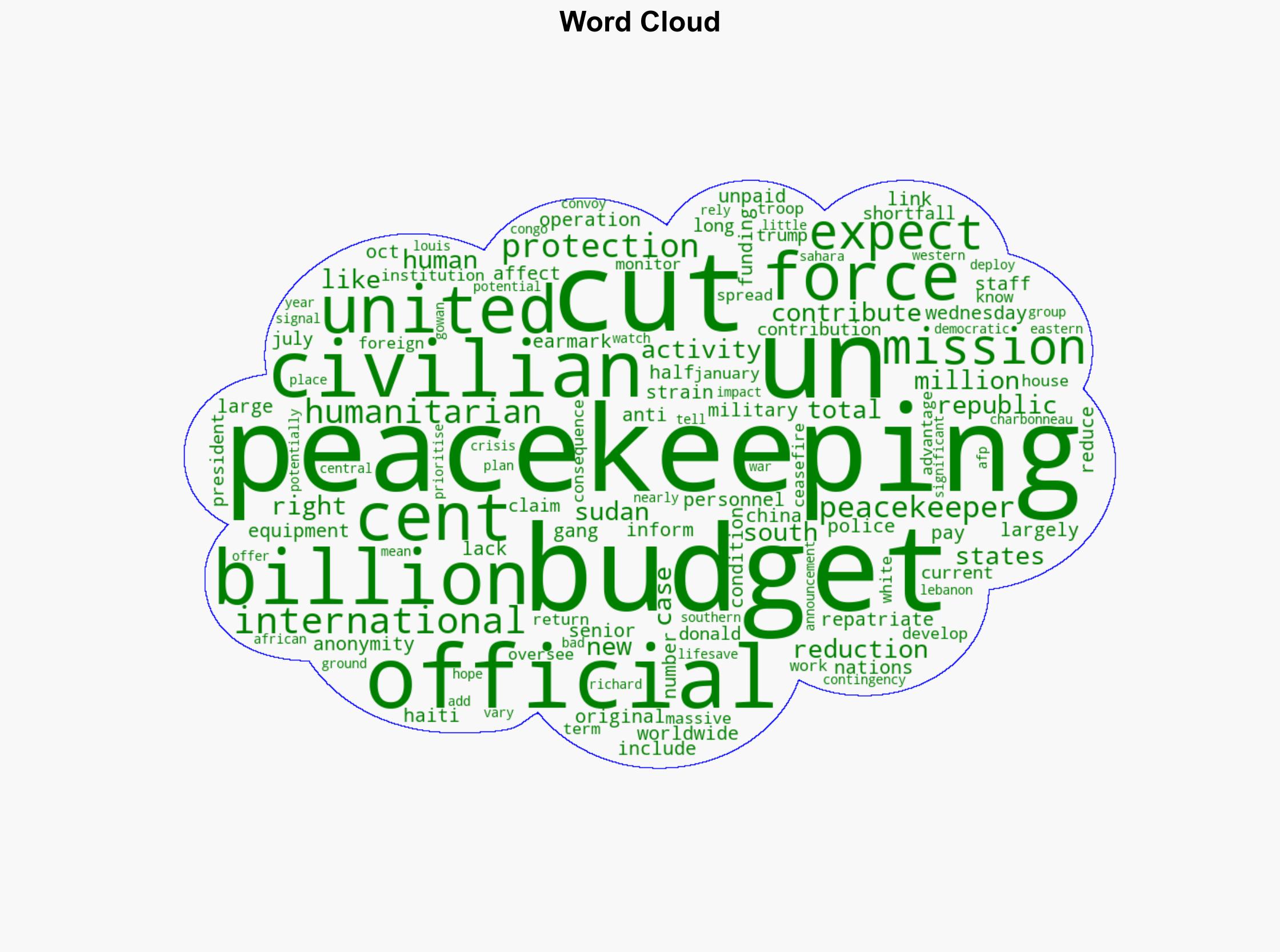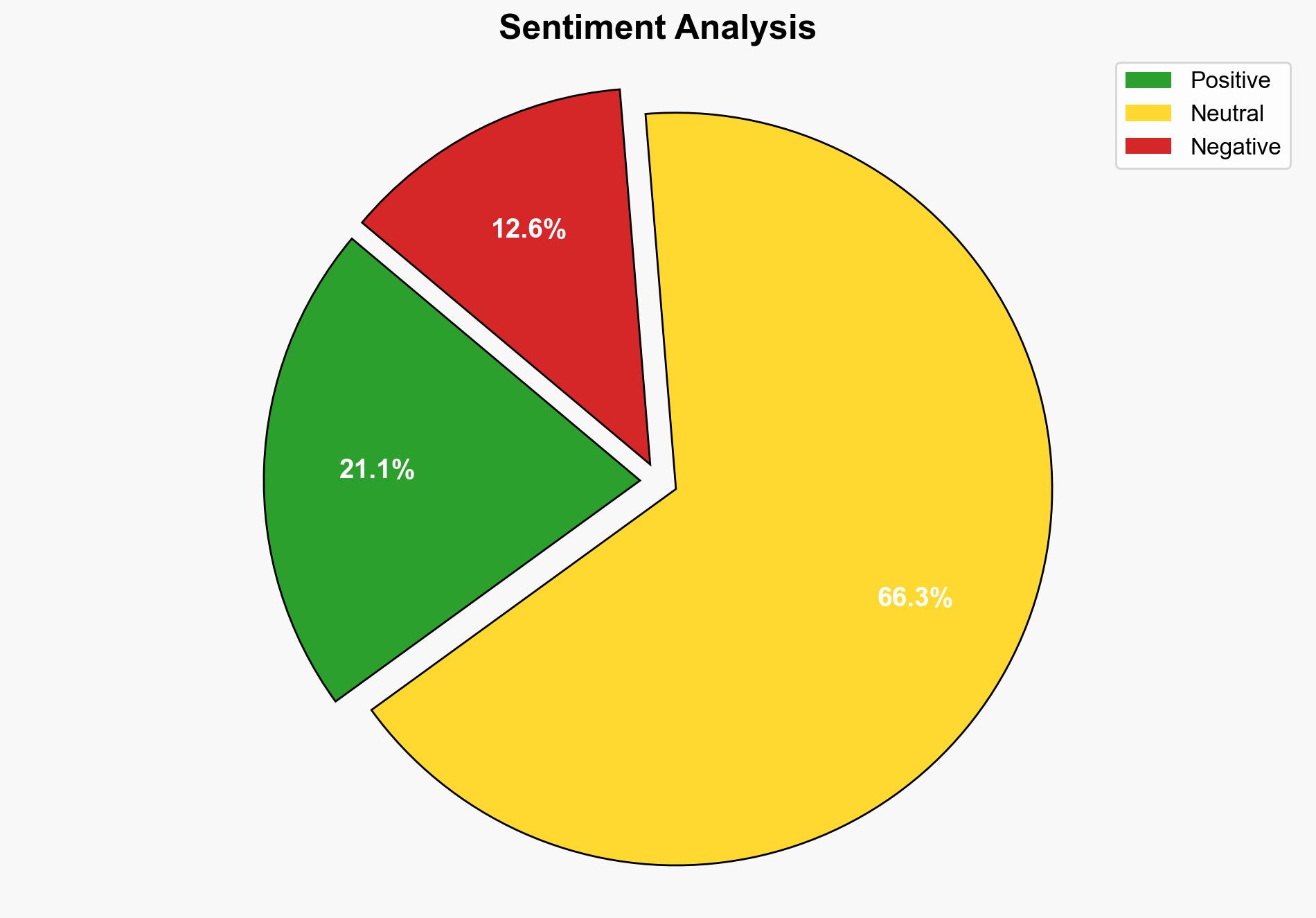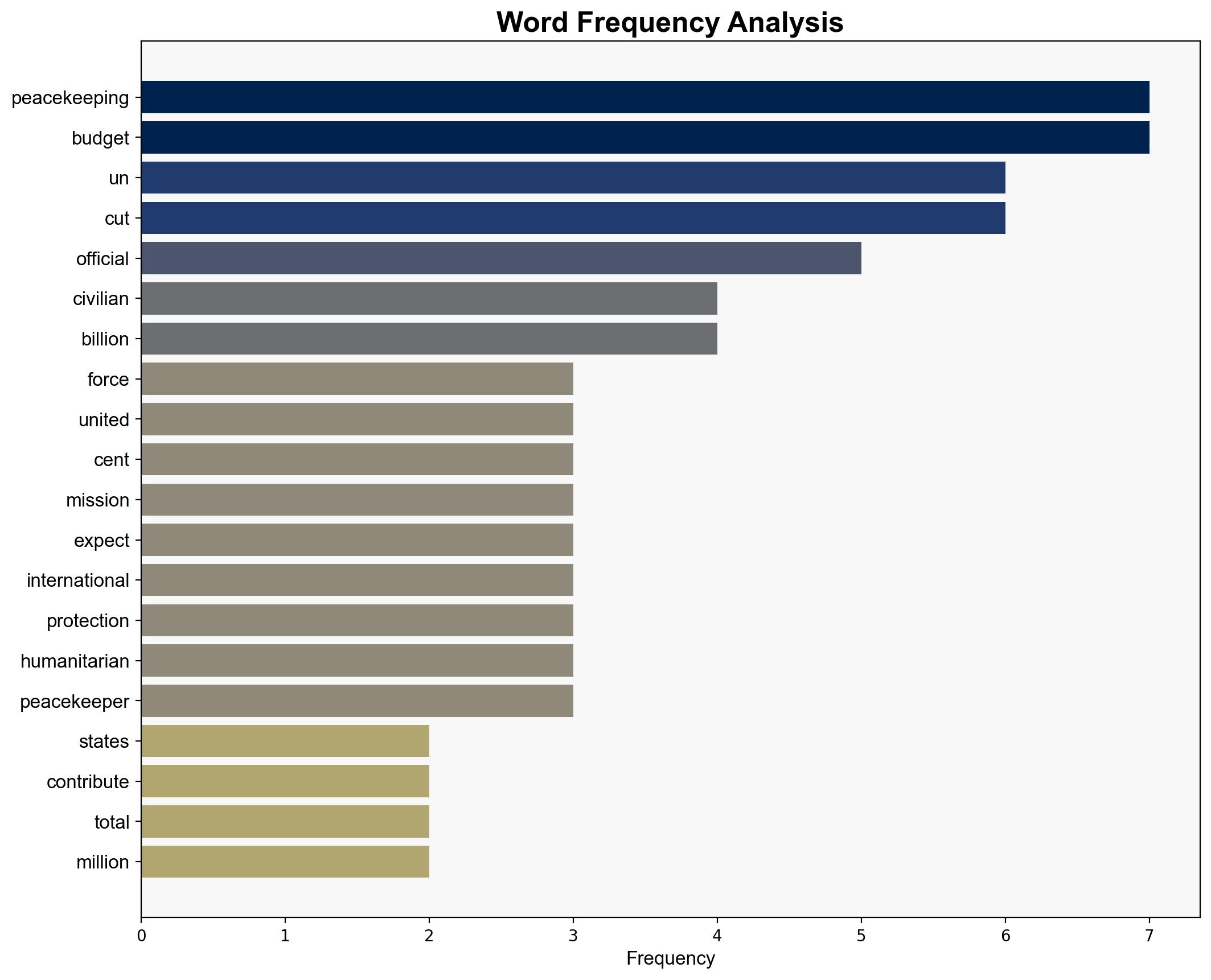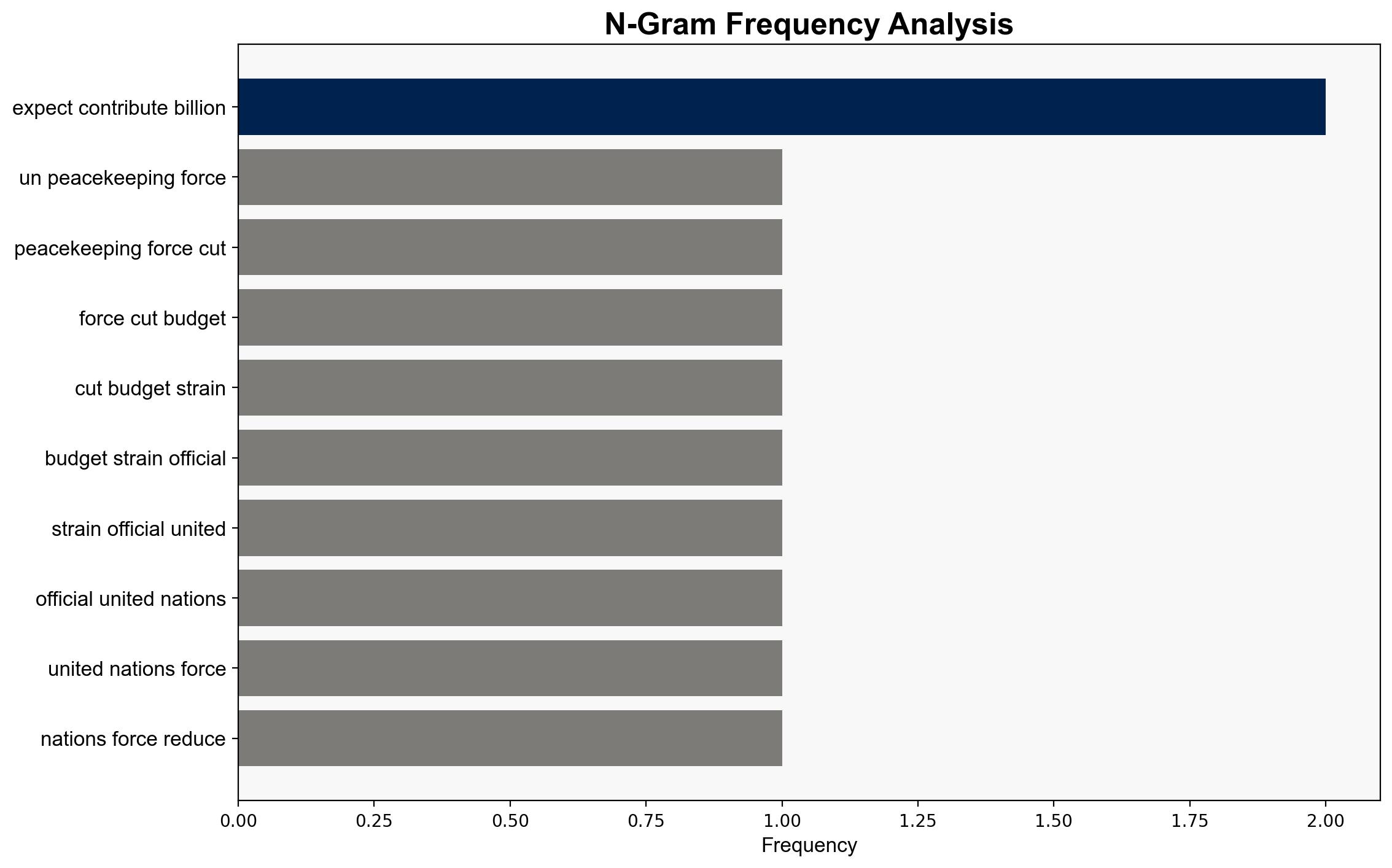UN peacekeeping forces to be cut 25 due to budget strains Official – CNA
Published on: 2025-10-09
Intelligence Report: UN peacekeeping forces to be cut 25% due to budget strains Official – CNA
1. BLUF (Bottom Line Up Front)
The most supported hypothesis is that the budget cuts to UN peacekeeping forces are primarily driven by financial constraints exacerbated by unpaid contributions, particularly from major contributors like the United States. This reduction poses significant risks to global peacekeeping operations, potentially undermining stability in conflict-prone regions. Confidence Level: Moderate. Recommended action is to engage in diplomatic efforts to secure alternative funding or contributions to mitigate the impact of these cuts.
2. Competing Hypotheses
Hypothesis 1: The budget cuts are a direct result of financial constraints due to unpaid contributions and a broader trend of reduced international financial support for UN operations. This hypothesis is supported by the explicit mention of unpaid contributions and the financial strain on the UN budget.
Hypothesis 2: The budget cuts are politically motivated, influenced by the United States’ stance on reducing its financial commitment to international institutions, as indicated by past statements from President Donald Trump. This hypothesis considers the political context and historical rhetoric about international financial commitments.
3. Key Assumptions and Red Flags
– Assumption for Hypothesis 1: The primary driver is financial, not political. This assumes that financial constraints are the sole reason without considering political motivations.
– Assumption for Hypothesis 2: The U.S. political stance is the main influence, potentially overestimating its impact without considering other contributing nations’ roles.
– Red Flag: Lack of detailed data on contributions from other major nations like China, which could provide a fuller picture of the financial landscape.
– Missing Data: Specific figures on how the cuts will affect each mission and region are absent, leading to uncertainty in impact assessment.
4. Implications and Strategic Risks
– Potential destabilization in regions like South Sudan and the Democratic Republic of Congo due to reduced peacekeeping presence.
– Increased risk of humanitarian crises if protection for civilian convoys and humanitarian activities is compromised.
– Possible geopolitical shifts as other nations or non-state actors may exploit reduced UN presence to expand influence.
– Economic implications for countries reliant on UN missions for stability and development.
5. Recommendations and Outlook
- Engage with international partners to explore alternative funding mechanisms or temporary financial support to maintain critical operations.
- Develop contingency plans for high-risk regions to manage potential escalations in violence or humanitarian needs.
- Scenario Projections:
- Best Case: Secured alternative funding maintains current operations with minimal disruption.
- Worst Case: Significant reduction in peacekeeping capabilities leads to increased conflict and humanitarian crises.
- Most Likely: Partial funding recovery allows for limited operations, with prioritization of critical missions.
6. Key Individuals and Entities
– Louis Charbonneau
– Richard Gowan
– President Donald Trump
7. Thematic Tags
national security threats, international relations, peacekeeping, geopolitical stability





